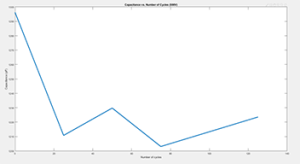Ensuring Reliability of Motor-Winding Insulation for Urban Air-Taxi Applications
Maxwell Lewis with adviser K. Haran
A significant challenge in developing electrified propulsion systems is ensuring the reliability of motor-winding insulation. In an urban air-taxi application, a motor responsible for propulsion will be operating under a unique mission profile. Traditionally, an aircraft has a brief acceleration and climbing period and remains in a steady-state operating condition while cruising. However, an urban air-taxi application will require short mission profiles, featuring climbing more frequently than a traditional mission. Concept machines for this application must optimize specific power to meet this demand, which in theory, requires overloading these machines during climbing. The research community is investigating how such a rapid overloading operation causes the electromechanical pieces to interact and the way that impacts windings degradation. With multiple pieces constantly heating and cooling, each with different thermal conductivities, the stresses applied to windings stand to vary considerably.
Results showed that variations in initial thermomechanical shock played a significant role in initial failure metric degradation, by as much as 6.9% in baseline capacitance and 34.22% in partial discharge inception voltage (PDIV). Also, holding peak temperature constant over the course of thermal cycling led to changes in magnitude of the dissipation-factor angle, but voltage dependence did not develop. In contrast, sweeping across a range of peak temperatures led to a similar change in angle magnitude but showed the development of voltage dependence, suggesting more rapid insulation degradation. These tests illustrate that operation consistency in a UAM aircraft could be a key factor in the qualifying these motors. PDIV and dissipation factor both are useful metrics for determining the potential lifetime of motors for an urban air mobility application, however it seems they are better for different conditions. Dissipation-factor testing may be more useful in applications which see more inconsistency in their operation, whereas both PDIV and dissipation factor would likely need to be used for more general applications to ensure proper winding qualification for safe operation. This research is funded by POETS.

